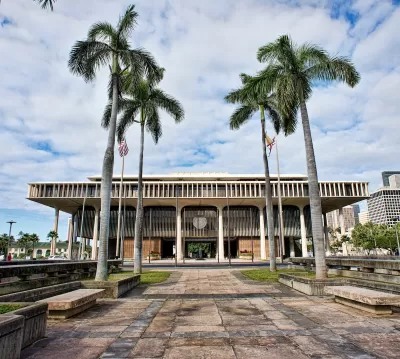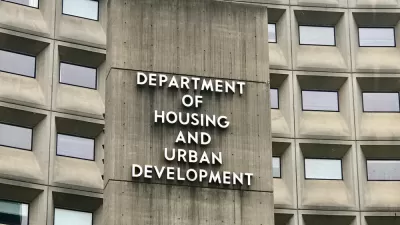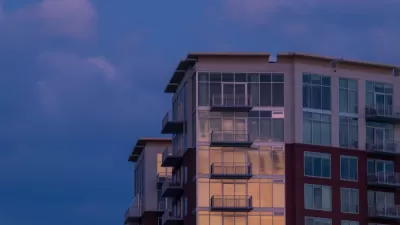The governor of Hawaii is using emergency powers to remove barriers to housing construction.

Hawaii Governor Josh Green earlier this month issued an executive order intended to spur housing construction in the state. The “Emergency Proclamation Relating to Housing,” as the order was titled, suspends state and county laws focusing on land use, historic preservation, and environmental review.
According to an article by Stewart Yerton for Honolulu Civil Beat, the governor cited a state law “giving the governor broad power to suspend laws that impede a response to emergencies such as natural disasters or the coronavirus pandemic” to issue the executive order. “In this case, the emergency is a shortage of housing and the response is to lower regulatory barriers to building homes,” reports Yerton.
Yerton adds that Gov. Green has framed housing prices in the state as an existential threat, “which has seen an outmigration that averaged 20 people per day last year as residents unable to afford the high cost of living fled to the mainland.”
The executive order provoked opposition, however, over concern about “potential exploitation of land and environmental harms with the suspension of many regulations aimed at balancing the need for development with protecting natural and cultural resources,” reports Yerton.
While multiple states have taken steps to preempt local control of land use powers in the name of housing affordability in recent years—namely Oregon, California, Montana, and Vermont—this is the first time such a sweeping act of state preemption has been achieved without approval from the state legislature.
FULL STORY: Hawaii Gov Takes Dramatic Action To Solve Housing Crisis. But Is He Going Too Far?

Manufactured Crisis: Losing the Nation’s Largest Source of Unsubsidized Affordable Housing
Manufactured housing communities have long been an affordable housing option for millions of people living in the U.S., but that affordability is disappearing rapidly. How did we get here?

Americans May Be Stuck — But Why?
Americans are moving a lot less than they once did, and that is a problem. While Yoni Applebaum, in his highly-publicized article Stuck, gets the reasons badly wrong, it's still important to ask: why are we moving so much less than before?

Using Old Oil and Gas Wells for Green Energy Storage
Penn State researchers have found that repurposing abandoned oil and gas wells for geothermal-assisted compressed-air energy storage can boost efficiency, reduce environmental risks, and support clean energy and job transitions.

Greening Oakland’s School Grounds
With help from community partners like the Trust for Public Land, Oakland Unified School District is turning barren, asphalt-covered schoolyards into vibrant, green spaces that support outdoor learning, play, and student well-being.

California Governor Suspends CEQA Reviews for Utilities in Fire Areas
Utility restoration efforts in areas affected by the January wildfires in Los Angeles will be exempt from environmental regulations to speed up the rebuilding of essential infrastructure.

Native American Communities Prepare to Lead on Environmental Stewardship
In the face of federal threats to public lands and conservation efforts, indigenous groups continue to model nature-centered conservation efforts.
Urban Design for Planners 1: Software Tools
This six-course series explores essential urban design concepts using open source software and equips planners with the tools they need to participate fully in the urban design process.
Planning for Universal Design
Learn the tools for implementing Universal Design in planning regulations.
Heyer Gruel & Associates PA
City of Moreno Valley
Institute for Housing and Urban Development Studies (IHS)
City of Grandview
Harvard GSD Executive Education
Salt Lake City
NYU Wagner Graduate School of Public Service
City of Cambridge, Maryland





























